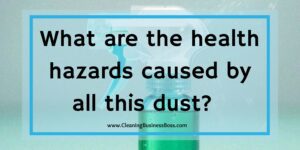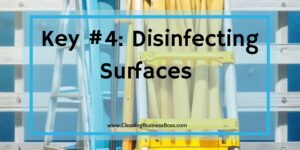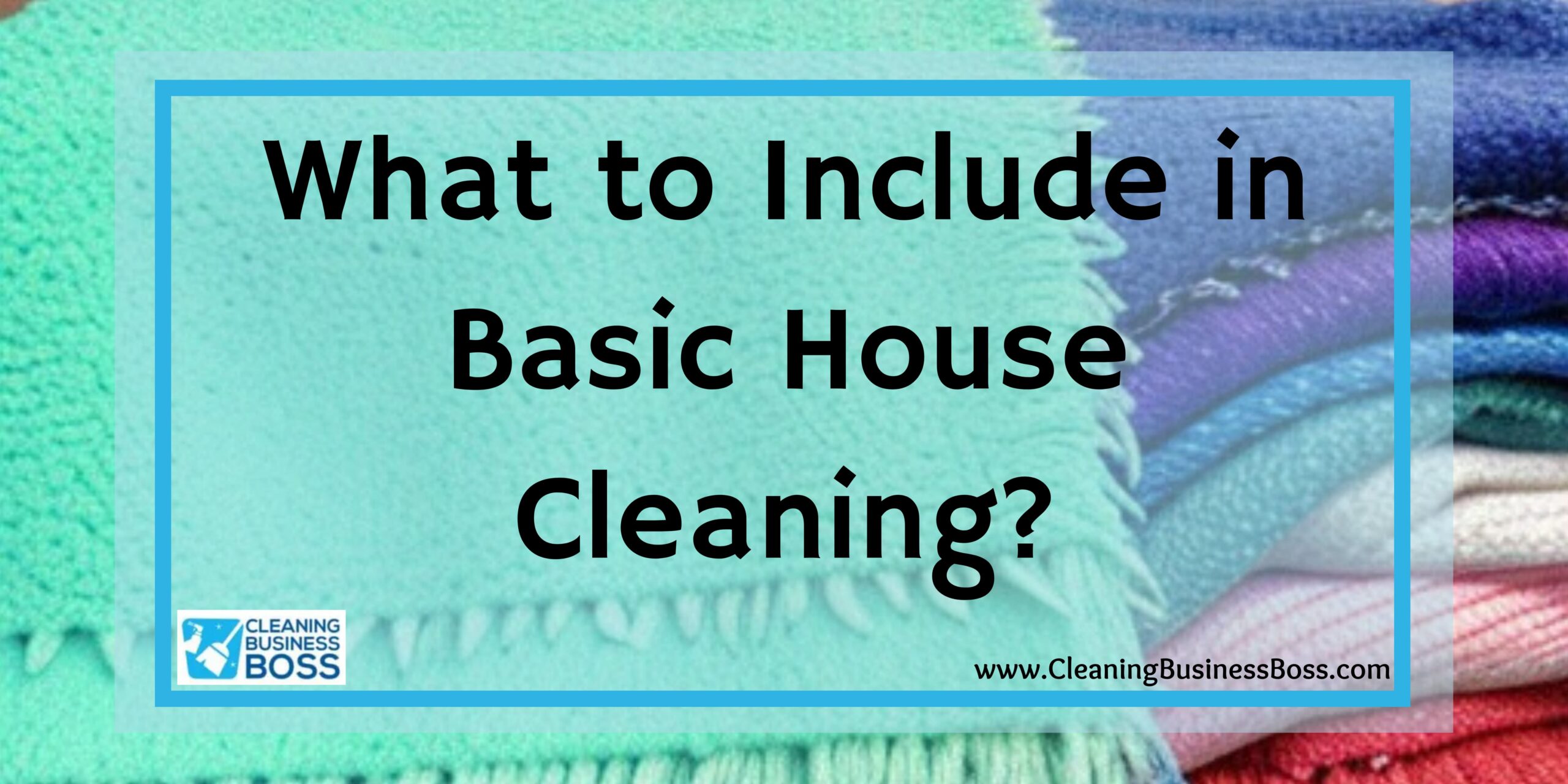Most people learn how to clean a house in one of two ways. Either they were taught at home by their parents or they figured it out the hard way. Whichever method they learned, chances are many people are not doing it completely. As a professional house cleaner, it is vital to your business to do the job the right way.
What to include in basic house cleaning as a professional will result in a thoroughly cleaned and refreshed home? The five keys to a clean house are:
- Dusting
- Freshening linens and fabrics
- Cleaning mirrors and windows
- Disinfecting surfaces
- Sanitizing floors
By following a weekly routine of whole-house cleansing, keeping your client’s homes clean will be a breeze. Professionally cleaning a client’s house is more than just picking up clutter and emptying the dishwasher. It’s a process of removing the contaminants, allergens, and toxic chemicals that have entered the home. House cleaning and maintaining life’s messes is a matter of health and hygiene.
Key #1: Dusting
Where does all this dust come from anyway? Studies found that dust is a mixture of sources. Researchers discovered most household dust particles contain the following:
- Dead skin cast of by humans and animals
- Carpet and upholstery fibers eroded away by daily activities
- Soil and other materials tracked in from outside
- Particles from the air such as pet dander and pollen
In addition to all of these, scientists have found that dust found in most homes today contains up to 45 toxic chemicals. While there have not been studies done to determine the level of danger these toxins generate, they do raise alarms. The plastics and furnishings we use every day are the sources of many of these toxins.
What are the health hazards caused by all this dust?

Dust can cause a number of adverse effects on the human body. The severity of these health-related conditions is relative to the size of the dust particles. It also depends on the susceptibility of the person who has encountered the dust.
Microscopic solids and droplets found in dust can enter the body, easily traveling deep into the lungs. Once there, they can move into the bloodstream, further infecting the body. Such particles can lead to severe lung and cardiovascular ailments in vulnerable individuals.
Larger dust particles cause irritation of the eyes, nose, and throat. In addition, dust mites living on the particles of dust are the primary source of dust allergies. Common symptoms of an allergic reaction to dust mites include:
- Itchy, red, and/or watery eyes
- Sneezing
- Runny or stuffy nose
- Itchy mouth, throat, or skin
- Coughing
More severe allergic reactions to dust mites can trigger asthma attacks. Symptoms of an asthma attack may include:
- Trouble breathing
- Tightness or pain in the chest
- Wheezing or whistling sounds when exhaling
- Shortness of breath
How to Dust the Right Way
The first trick to dusting is starting up high and working your way down to the floor as you move around the room from left to right. The second trick is to use the right tools for the job. Microfiber cloths and dusting wands are designed to trap the dust without the need for sprays and cleaners.
Check out this article to know what are the qualities you should have to be a housekeeper.
Key #2: Freshening Linens and Fabrics

Bed linens and furniture fabrics collect the same dust seen building up on bookshelves and window sills. On top of that, they absorb sweat and secretions as we sleep in our beds or sit on the couch. Pile on the crumbs from food or the occasional messy spill and the amount of filth builds quickly.
Washing bed sheets and cleaning furniture upholstery reduces exposure to harmful bacteria, fungi, and pollen. While most of these don’t cause severe illnesses, they can make some people sick if not kept in check. When left for too long, unclean linens will begin to attract other pests, especially if there are animals in the home.
Dirty sheets and fabrics also contribute to asthma attacks and can trigger allergies the same way dust can. Skin conditions such as eczema can flare up when bed linens are not clean. Other problems like contact dermatitis can result from sleeping in unlaundered bedding.
Proper Washing and Treatment
Changing the sheets and vacuuming furniture upholstery once a week will reduce the potential for itchy skin and other health risks. Washing linens in the hottest water the fabric can tolerate is best for killing germs as well as those pesky dust mites. As with other types of laundry, be sure to sort by color to prevent turning red and white sheets pink.
If possible, hang linens outside on a clothesline to dry once a month or so. The sunlight will provide bed sheets with additional disinfection. Plus, the natural light will help to brighten your whites and reduce the need for bleach. Some experts suggest ironing the bed sheets before stowing them in the linen closet or storage to kill any remaining dust mites and germs.
A good rule of thumb is to keep on hand three sets of sheets for every bed in use. This way bed linens can be rotated once a week making it easy to maintain fresh bedding. One-third of our lives are spent sleeping and what better self-care than clean sheets for better rest, comfort, and healthy living.
Key #3: Cleaning Mirrors and Windows
People are messy creatures and no surface in the home is safe from human befouling. Nowhere is the havoc more noticeable than on glass surfaces and mirrors. Be it the television screen or the bathroom vanity mirror, smudges and smears scream out, LOOK AT ME!
Glass tabletops become sticky and begin grabbing at any and all that make contact. Windows haze over in a mishmash of handprints and nose prints from peering outside. Mirrors fog up from hot, steamy showers. Then get splattered by toothpaste and bubbly soap from handwashing.
Keeping these surfaces clean is often more about aesthetics and versatility than it is about health and wellness. That isn’t to say dirty mirrors and windows are harmless. Dirt attracts more grime thus increasing the potential for health risks. Allowing build-up on glass surfaces and mirrors will begin to attract other pests like ants.
Secrets to Streak-free Windows and Mirrors
A professional-level clean requires using the right tools for the task at hand. Using the right tools makes the job easier to do and saves time when done right. When it comes to cleaning glass surfaces and mirrors, the secret ingredient is isopropyl alcohol.
Also referred to as rubbing alcohol, it is used in much the same way pretreatments are used on laundry stains. Combined with a cotton pad, the isopropyl alcohol breaks down sticky build-up while the cotton pad prevents scratching and absorbs the mess.
Spot-treating mirrors and glass surfaces will help prevent streaking caused by the gunky toothpaste, soap, and other common bathroom products. If you skip the pretreatment step then you end up smearing all that sticky residue across the entire surface area. This results in having to spend more time wiping and rewiping the whole mirror or glass surface.
After all the spots have been rubbed away with the cotton pad and alcohol, it’s time to mist the entire surface area with a cleaning solution. Most recommendations suggest using a 1-to-1 mix of white vinegar and water. Pour equal parts of each into a spray bottle, secure the spray head onto the bottle, then shake to mix it thoroughly.
Starting at the top, use a microfiber cloth to wipe the misted cleaning solution from left-to-right (or right-to-left if you’re a southpaw) in a zig-zag fashion all the way down the mirror. Professionals recommend using a flat-weave microfiber cloth because it promotes quicker drying. In addition, the cloths can be folded into fourths to increase the number of cleaning surface areas. This will also reduce the number of microfiber cloths needed to clean the whole house.
Check out this article to know how much independent house cleaners make.
Key #4: Disinfecting Surfaces

Kitchens and bathrooms are two of the busiest rooms in a home, often making them the messiest too. From splatters of spaghetti sauce on the stovetops to soap scum in the shower, cleaning these rooms can feel overwhelming. However, when done the right way with the right equipment, the kitchen and bathroom will sparkle in no time.
Choosing the correct cleaning product is especially important for these particular rooms. Kitchen messes often need the boost of a degreaser to remove the grime of cooking. Bathrooms require a cleaning agent that is designed to handle tough soap scum and, in some cases, hard water residue.
Both kitchens and bathrooms need multiple types of cleaners to handle all of the areas in need of cleaning. For example, cabinets may require a specific type of cleaner to prevent damage to the finish. Appliances, like glass top stoves, often need a specialized cleaner designed to prevent scratches. And toilets need to be scrubbed with a brush in addition to wiping down the lid, seat, and the exterior of the bowl.
Surfaces that are frequently forgotten when cleaning a house are the ones we touch the most often. Items like doorknobs, light switches, and handrails should be disinfected to kill the germs our dirty hands leave behind. A quick sweep with a microfiber cloth dampened with disinfectant will do the trick.
Key #5: Sanitizing Floors
By far, floors take the most abuse in our day to day lives. They are the collectors of everything dropped, spilled, or tracked in from outside. Keeping floors clean and sanitized can be a tough job in a busy household.
Proper cleaning techniques are essential when it comes to taking care of the floors. Using the right tools can make all the difference in the level of cleanliness one is able to achieve. Knowing how to sweep correctly and thoroughly will save time and energy.
Mopping, unlike sweeping, requires making sure the right cleaner is being used on the type of floor being cleaned. Applying the wrong cleaning product to a floor can cause irreversible damage. It could also create more work in the future if the cleaner leaves behind a film or sticky residue resulting in more grime.
Professionals say never to use soap-based cleaners on floors as they will leave a dull film. Most floors require a clean water rinse after cleaning to ensure the cleaning solution doesn’t remain on the floor and collect more dirt. They also suggest never waxing floors because of the dangers of slip and falls.
Frequently Asked Questions
What is the difference between cleaning, sanitizing, and disinfecting?
Cleaning involves the removal of bacteria, dirt, viruses, and germs. Sanitizing focuses on the removal of germs to meet safe levels as established by public health standards. Disinfecting uses chemicals to kill the germs rather than just removing them like cleaning and sanitizing does.
How many different types of flooring are there in the United States?
Currently, there are 11 different types of flooring available, each requiring specific care to ensure the longevity of the floor. There are 3 types of tile flooring: ceramic, quarry, and terracotta. The remaining floor types are laminate, vinyl, linoleum, wood, cork, stone, concrete, and carpet.
To learn more on how to start your own cleaning business, check out my startup documents here.
Please note that the contents of this blog are for informational and entertainment purposes only and should not be construed as legal advice. Any action taken based on the information provided in this blog is solely at your own risk. Additionally, all images used in this blog are generated under the CC0 license of Creative Commons, which means they are free to use for any purpose without attribution.

About the author. Entrepreneur and Cleaning Business Fan.
Hi! I am Shawn and I am a happy individual who happens to be an entrepreneur. I have owned several types of businesses in my life from a coffee shop to an import and export business to an online review business plus a few more and now I create online cleaning business resources for those interested in starting new ventures. It’s demanding work but I love it. I do it for those passionate about their business and their goals. That’s why when I meet a cleaning business owner, I see myself. I know how hard the struggle is to retain clients, find good employees and keep the business growing all while trying to stay competitive.
That’s why I created Cleaning Business Boss: I want to help cleaning business owners like you build a thriving business that brings you endless joy and supports your ideal lifestyle.


1 thought on “What to Include in Basic House Cleaning?”
Comments are closed.